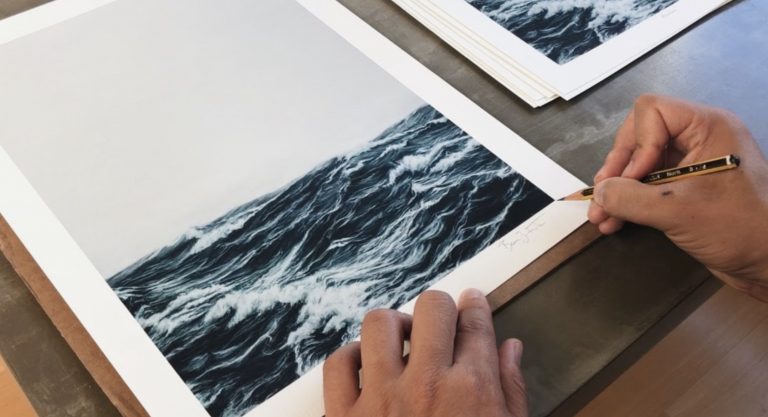Showcasing your work is a top priority as an artist, designer, or illustrator. But, to get into the galleries and exhibitions, you’ll need an effective way of displaying your work to grab the attention of curators. That is where your artist’s portfolio comes in! Today we’ll be looking at professional artist’s portfolios, what makes a great portfolio, and why you should use giclée printing for your portfolio of works.
Story Stages
Why create an art portfolio?
Your art portfolio can be a powerful tool for marketing yourself as a professional artist. Many art students are already familiar with the portfolio. Artist portfolios are commonly used for art school applications, but artist portfolios are just as important for professional artists. A portfolio of works is usually required for submissions to galleries, exhibitions, private shows, and even grants. In addition, art portfolios are a great way for curators to get to know an artist and their visual point of view. So what should a good artist’s portfolio include?
Artist’s Introduction
The start of your portfolio should include all of your introductory documents. This is where gallerists and curators can find out all the information about you as an artist. Make sure to include a cover letter, CV, biography, artist’s statement, and price list.
Showcase of your works
The heart of your artist’s portfolio is your works themselves. While it is important to adhere to any specific submission requirements, as a rule of thumb, your portfolio should include a selection of your best works that flow together with a distinct narrative. Your artist portfolio should grab your viewer’s attention and bring across your unique artistic vision.
Professional highlights
This is a great opportunity to brag. In addition to a CV and cover letter, it’s good to include examples of other galleries and exhibitions your work has been featured in. Highlight your works with reviews from previous shows and any literature or write-ups that have been published about your works.
Why you should use giclée printing
If you are creating a portfolio of works, you’ll want your artworks to look their best. Giclée has been one of the most popular printing (alongside C Type Printing) styles favoured by artists since its introduction in the 1990s. Giclée, or spray in French, refers to the way the print is made. Giclée prints are created using a halftone printing technique. Using cutting-edge inkjet printers, microscopic dots of ink, known as halftone patterns, are sprayed onto archival paper. Then, as colour is added to the paper, the tiny dots merge like pixels, to make the finished image. Let’s explore some of the reasons why giclée printing is the preferred print style for artists around the world over.
Quality
While the giclée printing process may appear similar to your home printer, professional giclée printing produces far superior quality prints. To start with, giclée prints require high-resolution images. The resolution of the image will determine the sharpness and clarity of the printed work, so professional printers recommend starting with images that have at least 300 DPI.
Alongside quality images, giclée prints use the best materials available to achieve superior quality prints. Using top of the range equipment, giclée prints are produced on acid and lingin-free archival papers with HD ultra-chrome pigment-based inks. Because of this combination of exceptional materials, giclée printing can easily create images with a broad range of vivid colours that will retain their quality for a lifetime.
Colour
One of the top reasons that artists choose giclée printing for their portfolio is the exhaustive range of true to life colours available. From deep, inky blacks to verdant tropical green, dazzling yellows and rich reds, giclée printing knows how to showcase colour. Other printing styles like c-type use silver halide, which doesn’t have the same range of colour. Digital and home printers use simple CMYK 4-colour inks, which cannot compete with giclée. Using 12 different shades of HD ultra-chrome ink, giclée can create an unparalleled rainbow of spectral colours. If you’re looking to fill your portfolio with colourful, eye-catching prints, then giclée is the best printing style to showcase your works.
Archival
Giclée is one of the only printing styles with an archival rating. Using only the highest-quality materials on the market, giclée prints can achieve exceptional longevity. When stored in typical conditionals, giclée prints can retain their quality for 100+ years without fading or deteriorating. Because giclée prints are produced with the highest-quality acid and lignin-free paper and HD ultra-chrome pigment-based inks, they are made to last, making them ideal for portfolios and archival purposes. If you’re looking for a printing style that will retain its quality for years to come, look no further than giclée prints.
